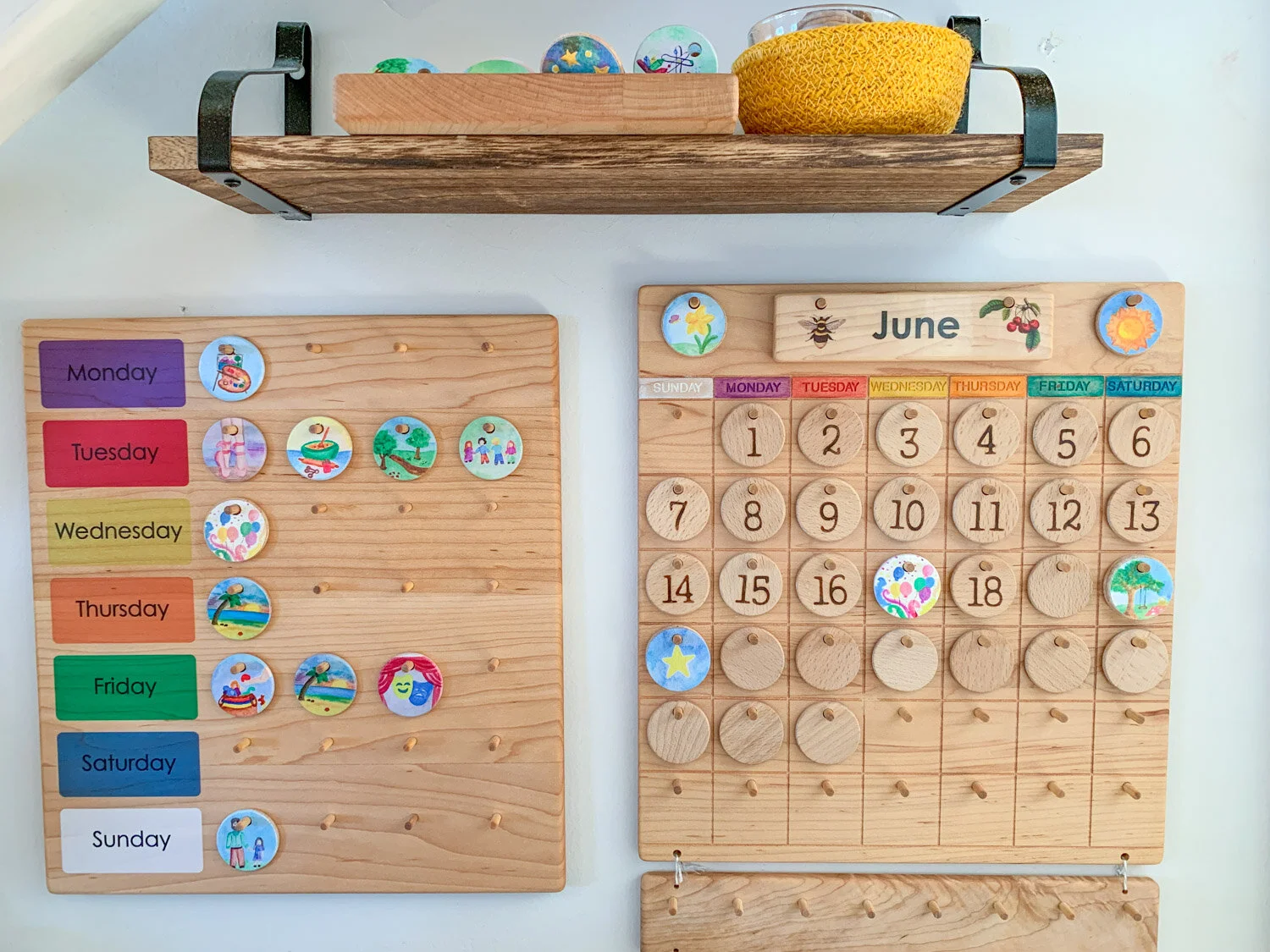Rhythm
Rhythm is one of the many homeschool buzz words. Home or homeschool rhythm boils down to the idea that we can intentionally and organically create a flow to our days, weeks, and seasons.
Rhythm, or a flow to your day, establishes predictability and helps children (and parents!) know what to expect. In You are Your Child's First Teacher, Rahima Baldwin Dancy writes:
““Rhythm in home life can also help calm a nervous child by turning the child’s life into a series of events in which he participates, and from which he gains a new sense of security and competency.””
Rhythm is different than a schedule in that it develops out of anchor points in our days/weeks and is flexible to our families' needs. Comparatively, a schedule can feel daunting, even with self-imposed. The constant clock checking and feeling behind if our activities aren't matching our schedule is exhausting and often counter-productive.
Our family thrives on a predictable daily and weekly rhythm. Our rhythm changes several times a year, based on seasonal activities and naps. Our daily and weekly rhythms develop from anchor points like meals, naps, and quiet time. These rhythms help everyone know the flow of our days and weeks. The kids know what is coming up and feel at ease when they can anticipate how the day and week will go.
We utilize the Waldorf color days to help the kids (especially preschoolers) better anticipate upcoming activities. It is much easier for young children to remember activities by a color day than the days' names — and not to worry, they do learn the actual day names over time.
“The regular reoccurrence of the daily rhythm, in which one element flows smoothly into the next, is indeed calming and offers the children a sense of security through which their forces of will, expressed in their play, can be strengthened and their imagination take shape in the environment.”
Now, I am saying this to both you, the reader, and myself — the parent of 3 children under six and wife a work-from-home-spouse (remote working). I would love to have a tidy house and for our rhythm to flow smoothly throughout the days and weeks. The reality is that it's tough. But that doesn't mean I can't work towards a goal or with a means in mind. I know that everyone is less grounded (ahem, we are a hot mess) when the house looks like a rainbow bomb went off, or our normal rhythm gets thrown out the window for whatever reason. This type of situation is where having a mindfulness practice works hand in hand with family rhythm. We can pull out our tools to help ground ourselves when things go awry. You can read more on how we approach rhythm here.
Additional Resources
Lavender’s Blue Homeschool: The Rhythm Quick Start Guide
Simplicity Parenting: Using the power of less to raise happy, secure children by Kim John Payne
Call of the Wild and Free by Ainsley Arment


